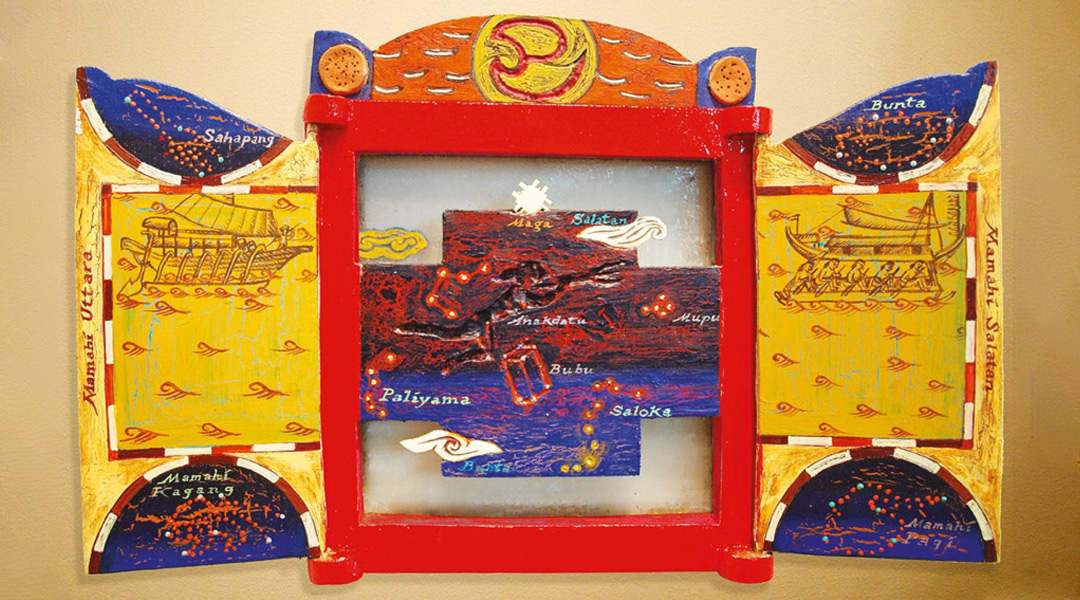
Return to Lemuria: Strengthening a people’s sense of identity through folk art
According to myths about Lemuria, an ancient land that sank into the Pacific Ocean, its people were peace-loving, highly artistic, and spiritual beings who lived in harmony with nature. Like his previous one-man show, Mga Sinaunang Binalikan, William Gaudinez’s Alay sa Lemuria expresses a longing to return to the past and utopian ideals.
Driven to use his art to strengthen people’s sense of identity, Gaudinez combines images of Filipinos in history, myth, folklore, and narratives in three-dimensional collages utilizing retablos and urnas. (Retablos are richly decorated wooden boxes that function as receptacles of religious icons behind the altars of Christian churches, while urnas are polyptychs—multi-paneled religious paintings hinged together and folded, used during the Medieval period.) Gaudinez carves his retablos and urnas with rich textural patterns resembling callado, a style of embroidery popular in19th century.
In Ang Daloy ng Buhay Ayon sa Buwan, using acrylic inlay combined with glow in the dark objects, Gaudinez recreates a visual narrative based on two ethnolinguistic groups—one from northern Luzon and one from Mindanao. The piece features two farmers in Cordillera toiling in the field, juxtaposed with a Muslim noble family waiting for a planting ritual to begin. Both practices are performed in time with the waxing and waning of the moon. For Bakunawa Rising, Gaudinez uses mulawin wood with mother-of-pearl and glow in the dark inlay to accentuate the moon and the bakunawa, a dragon-like snake deity in Philippine mythology. According to legend, eclipses occur when the bakunawa tries to swallow the seven moons given by Bathala to his people.
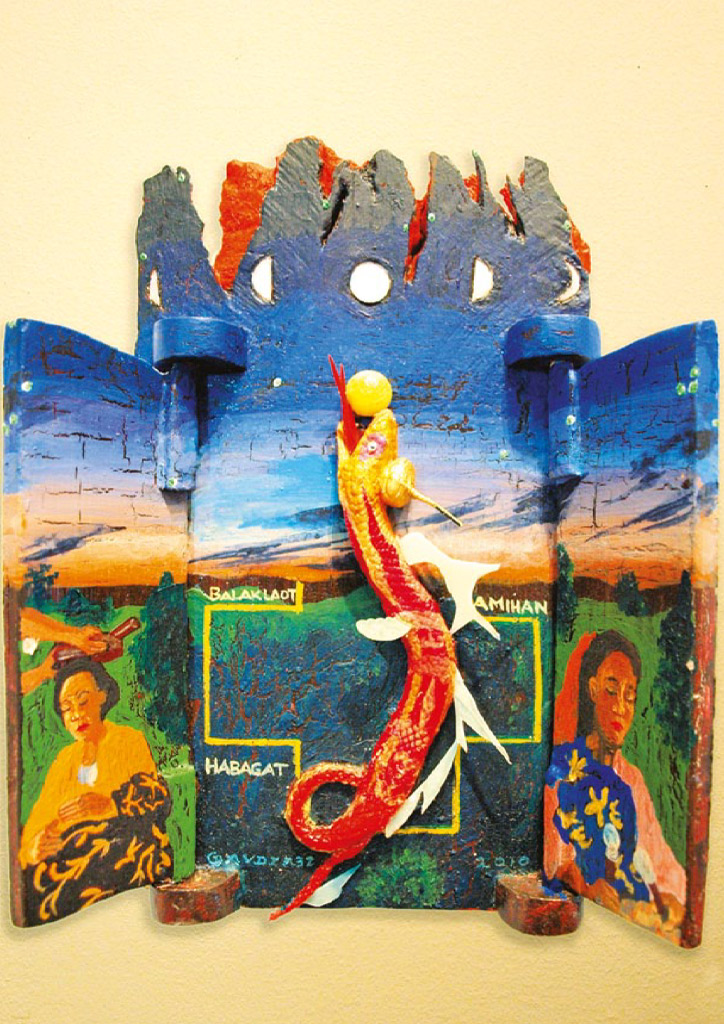
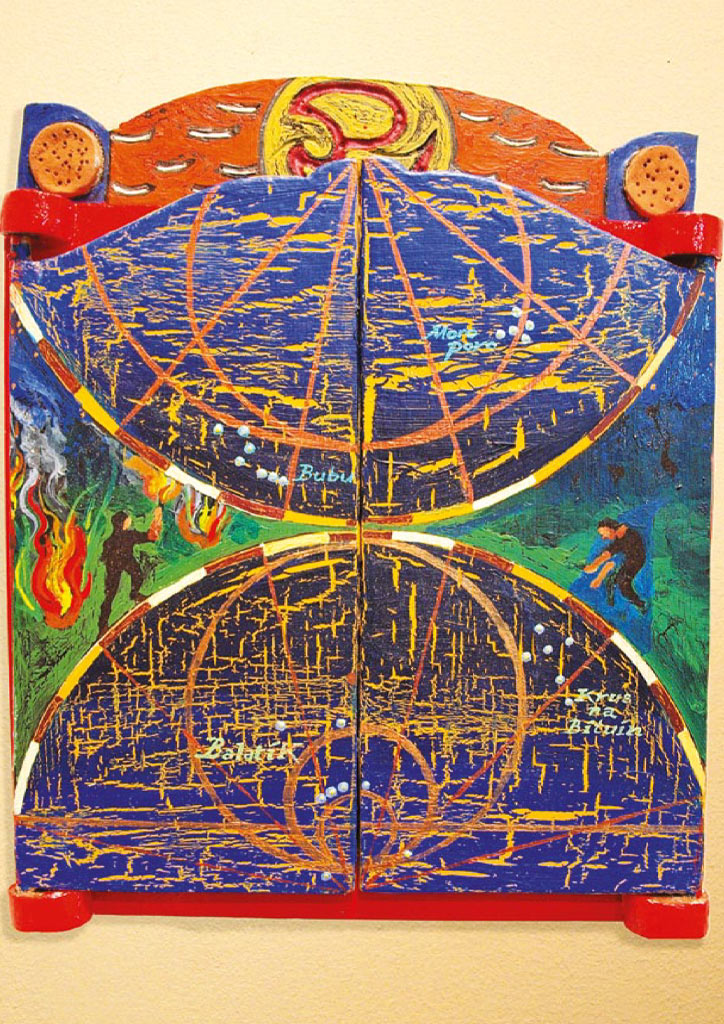
Emphasizing a deep sense of connection between the material and spiritual worlds, images of local voyages of pre-colonial Filipinos are interspersed with the stars and constellations that serve as guides and companions on their journey in Gaudinez’s Heavenly Bodies Over Tawi-tawi. The triptych functions as a vessel to contain the painted, inlaid, and incised representations of the heavenly bodies, land, water, and man.
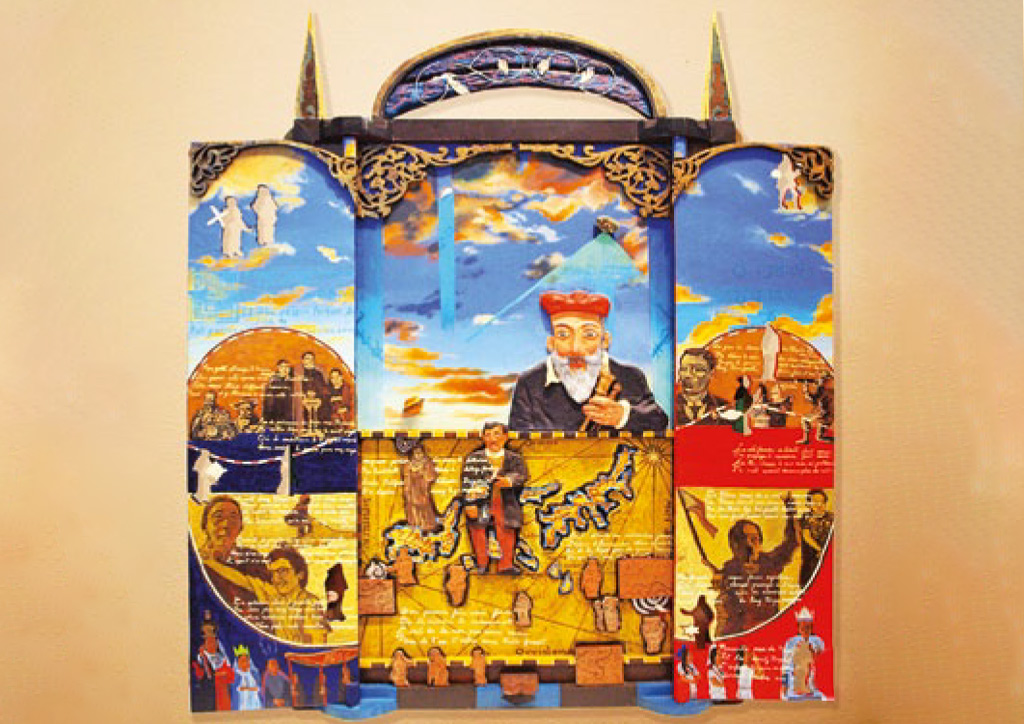
Gaudinez’s fascination with indigenous health practices is pursued in Hilot at Ibang Hindi Pangkaraniwang Gamot. Here, he asserts that modern medical practices such as in vitro fertilization are inferior to natural folk healing methods shown in the texts and scribbles he interweaves with a mosaic of pictures that depict the connection of the physical body to the spiritual world.
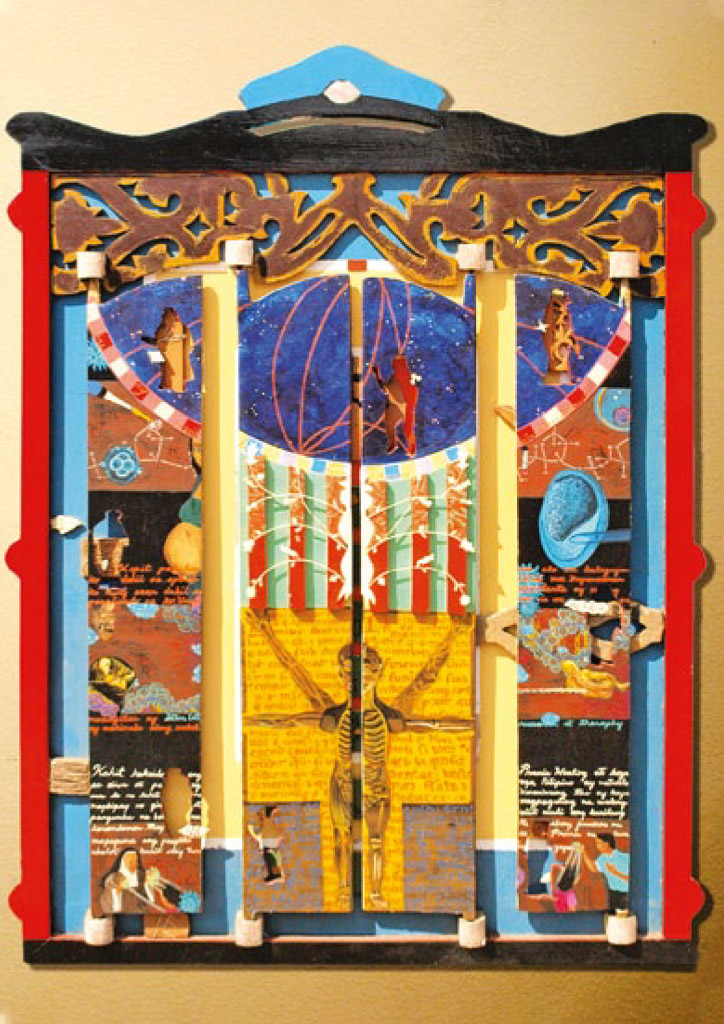
The indigenous belief system adheres to the idea of a dual nature of man—the materiality of body and the presence of a soul within; the outer (labas) versus the inner (loob). Kalooban, a polyptych urna, vividly recreates the many positive meanings of loob when another word is attached to it, such as tibay ng loob, pagbabagong loob, mabuting loob, kalinisang loob, bukas ang loob, mababang loob, puspusang loob, matatag na loob. These commonly used phrases in the vernacular speak of a worldview of positive traits and values inherent to Filipinos. The inscription, “May pag-asa pa ang loob,” adorns the front cover of the urna, clearly suggesting a challenge posed by Gaudinez to viewers—a call for change.The quest for self and national identity is reflected in the works of William Gaudinez. Alay sa Lemuria reinforces the value of folk knowledge and its place in contemporary society. The myth of Lemuria resonates in the works of Gaudinez for they speak about striving for an ideal society and culture. They reveal a people’s deep sense of connection to the natural and spiritual realms, a reminder that past ideals should not be forgotten.
This article first appeared in BluPrint Volume 5 2010, Remembrance and Design. Edits were made for BluPrint online.
READ MORE: Sophisticated Folk: The Genre Works of National Artist Vicente Manansala


